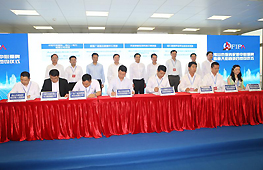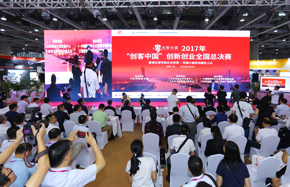Sharing the fruits of China's knowledge
Medardo Sanchez, an agriculture expert from El Salvador, traveled with 10 of his compatriots for nearly 50 hours to reach Hainan Island on July 15 - the longest journey of his life.
The contingent had come to find solutions for agricultural problems in their homeland.
"As a tropical country, it is a shame we have to import many lichees every year because of the low yield of local fruit trees. To our dismay, some only grow flowers and bear no fruit," said Sanchez, an adviser to El Salvador's Ministry of Agriculture and Animal Husbandry.
|
Left: Participants from developing countries attending a training course on tropical fruit production visit a greenhouse in Hainan. Right: A Chinese researcher (second from left) shares his knowledge with members of the training course. Photos Provided to China Daily |
The 25-day training course on production technology of tropical fruits for developing countries held in Hainan, China's only subtropical province, made his long journey worthwhile.
"I believe with the new skills learned in Hainan, lichee trees in my country will be able to bear more fruit and the output of pitaya (dragon fruit) is likely to grow 10 times from the current yield," Sanchez said at the closing ceremony on Aug 9 in Haikou, the capital of the province.
Judy Ngina, an agriculture expert from Kenya, said the course, which included lectures and practical classes from academics from the Chinese Academy of Tropical Agricultural Science at Hainan University was enlightening. Subjects covered included tropical crop cultivation, propagation, fertilization, pest management and processing of tropical fruits, she said.
"We will take home a wealth of deeper knowledge on planting, harvesting and post-harvesting technology of tropical fruits and cannot wait to put it into practice," she said.
The training course involved 28 participants from seven developing countries: El Salvador, Ghana, Kenya, the Philippines, South Africa, South Sudan and Uganda.
Over the past 15 years, with support from the central and Hainan governments, CATAS has organized more than 100 training courses for 4,000 participants from 95 countries.
The academy was established in 1958 and has played a major role in developing China's tropical agriculture industry, said Liu Guodao, vice-president of CATAS.
Apart from training and exchange programs in Hainan, Chinese tropical agriculture scientists and researchers have offered assistance overseas that has been warmly welcomed. "Wherever we go, we carefully find the problems and offer our best solutions. Instead of giving fish to the local people, we teach them how to fish," Liu said.
Liu, who has just wound up a trip to Panama, said 10 agricultural scientists from Hainan spent 42 days in the country, inspecting farms and giving local researchers, technicians and farmers on-the-spot training and guidance.
In April, seven months after El Salvador established diplomatic relations with China, Liu led a team of Chinese experts to conduct investigations into the country's agricultural resources. The Chinese experts outlined medium-and long-term development programs for El Salvador's tropical agricultural industry.
Over the past 10 years, more than 50 agricultural experts have been sent to locations around the world as varied as the Middle East, the Asia-Pacific region and Central Africa to help guarantee local food security, according to a report from CATAS.
The transfers of technologies on tropical farming have generated major changes in the agricultural sectors of the countries and were commended as a model for sustainable cooperation by Jose Graziano da Silva, former director-general of the UN's Food and Agriculture Organization.
The Agricultural Technology Demonstration Center in the Republic of Congo, built in 2011 with Chinese government grants, has played a major role in upgrading local farming and introducing new crops.
Output of cassava, a staple food in the Republic of Congo, has jumped from 9 metric tons per hectare to 51 tons in eight years. "With seedlings provided from the center, monthly income of local farmers increased by more than 1,000 yuan ($140), which is 1.5 times their former monthly income," said You Wen, who stayed in the country for more than two years to provide training support to the local farmers.






















